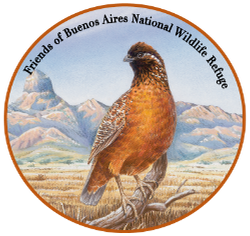Wild Wednesday 24 February 2021. Light
by Walt Anderson
The Granite Dells is a sensational landscape at any scale, but the job of a serious photographer is to see such a place in a new light. In mid-day without a cloud in the sky, it becomes a bit challenging to find a subject that isn’t too contrasty, too flat, too “ordinary.”
There is a magic hour, however, before the sun sets that often brings the landscape to life. There are the same rocks, the same trees, the same birds, as any other time, but if you can truly see the light, the ordinary becomes extraordinary.
In recent years, the opening of the Peavine and Iron King Trails; the creation of public open space in parts of the Dells, including the lakes; and the educational campaigns of Save the Dells and Granite Dells Preservation Foundation have awakened residents and visitors alike as to just how important and beautiful this landscape is. Public support has been tremendous, and we are at a crucial moment where a developer’s annexation proposal has reached the development agreement phase. Soon those details will be revealed, and the public can weigh in on the finer points until the City Council concludes the negotiations, and the annexation, we hope, becomes the win-win-win we have been promoting all the way along.
This Wild Wednesday is a celebration of this precious, unique landscape. All these photos of the landscape and some local waterfowl were taken recently. I will comment on how the light helps make each one special.
The AED annexation is a vital step in our desire to protect as much as possible of the Granite Dells as a regional park and preserve valuable to people and wildlife alike. In addition to our own celebration of this special place, we need to do everything we can as caring citizens to help our decision-makers see the light.
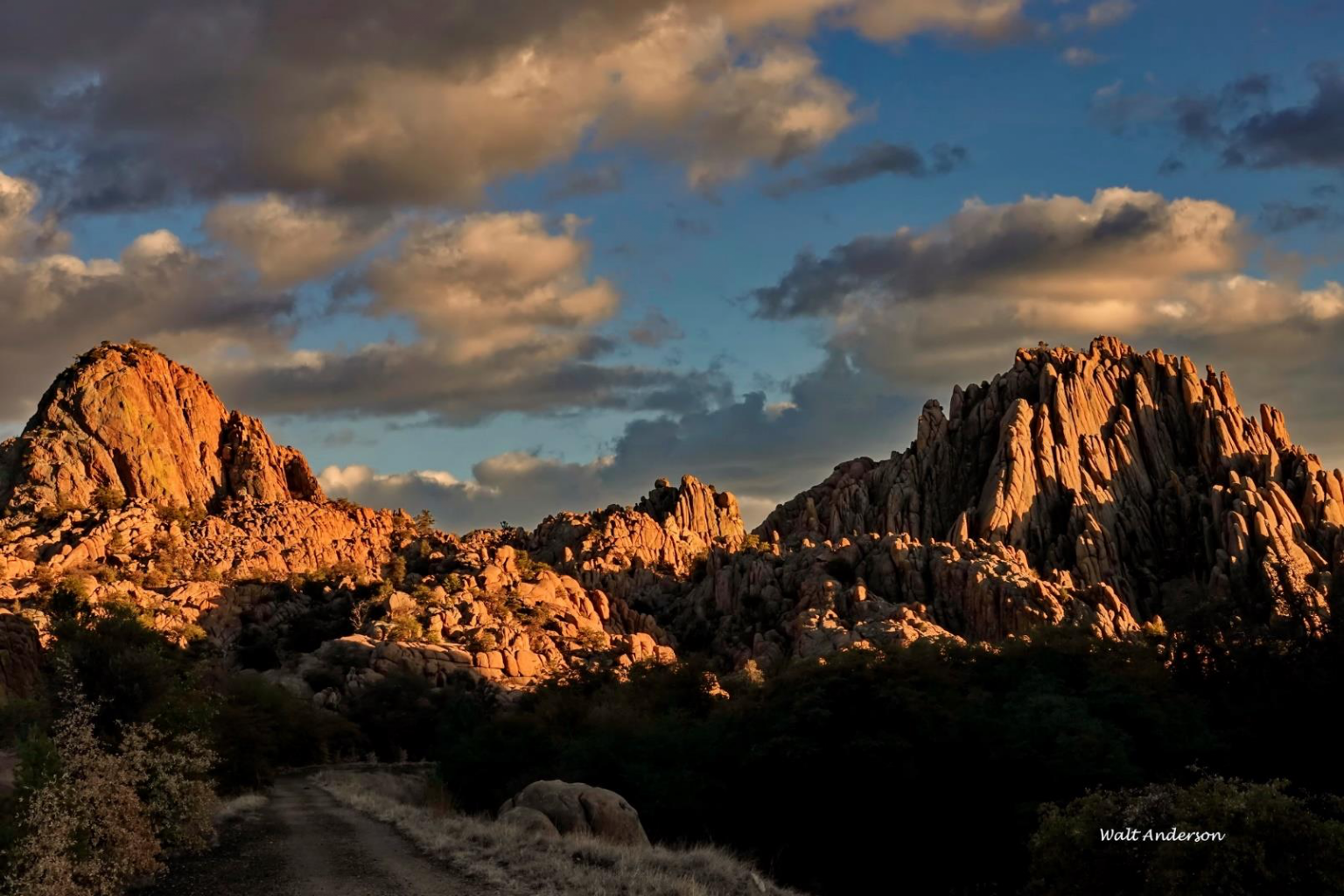
The sun is casting its last rays on the dramatic summits of Easter Peak and Point of Rocks. In the foreground shadows, the Peavine Trail invites us into this scene. Scattered clouds are illuminated, creating interest that would be missing on a clear-sky Arizona day. As this day comes to a close, a Canyon Wren in the rugged turrets of Point of Rocks sings its haunting vespers. It’s soon time for us to hurry home while we can still see the trail.
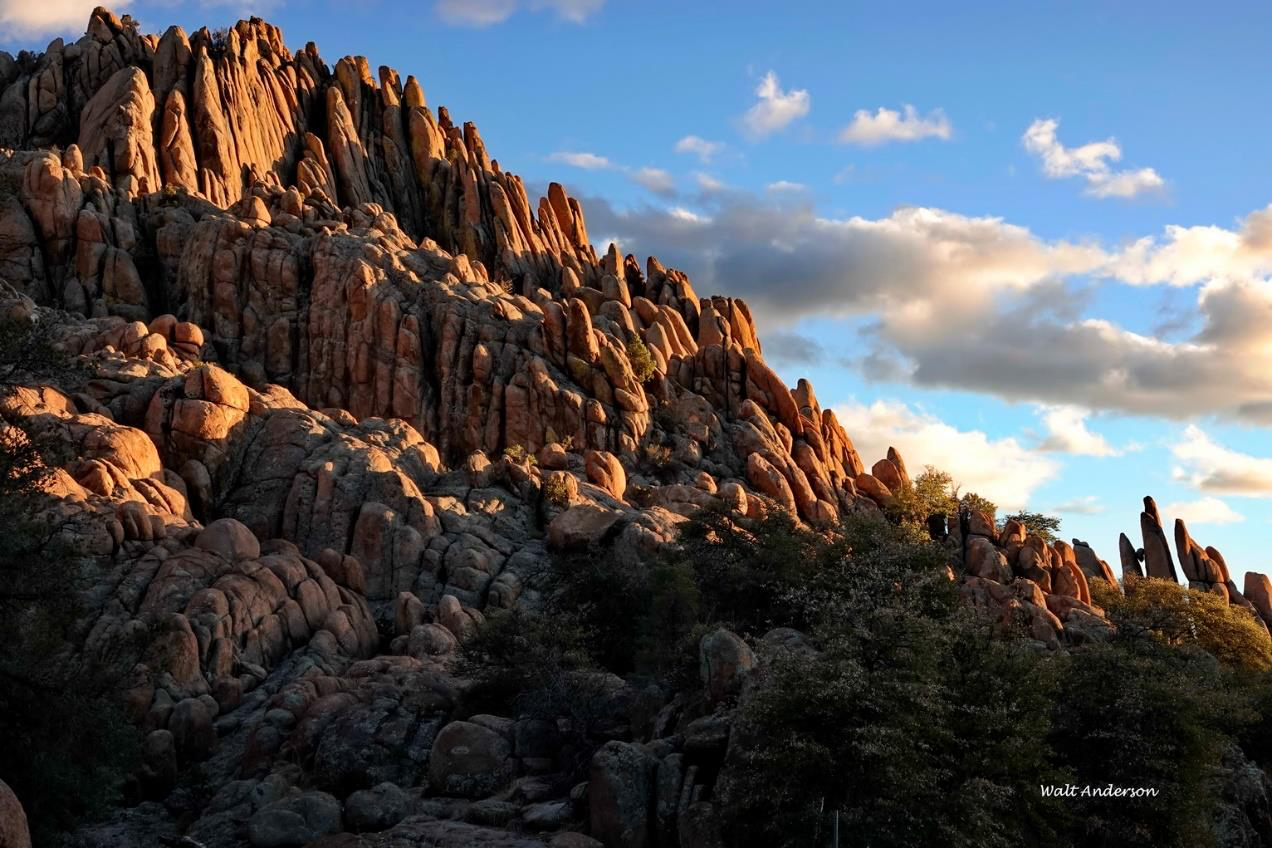
A few minutes later, we pass the base of Point of Rocks. It’s hard to imagine the underground forces that created this intricately patterned, almost tortured, granitic sculpture over the past 1.4 billion years. How lucky we are to have been born just at the right millennium to view this natural monument! I would have hated to have missed it by being born just a million years too late.
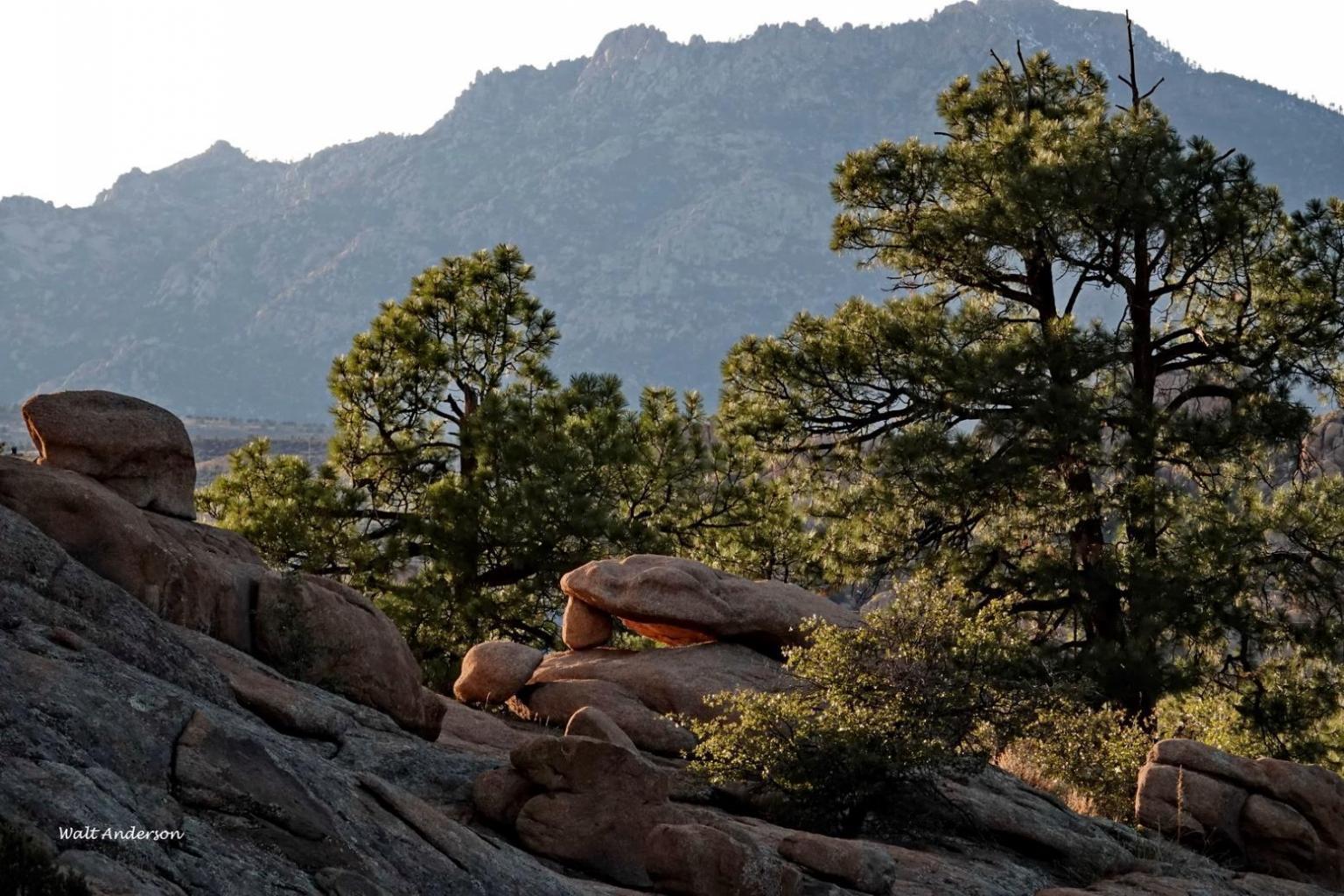
The low-angle light draws my eye to a giant petrified lizard eating a boulder-sized egg. The lighting is attractive on its own, but the playful eye sees something much more memorable here.
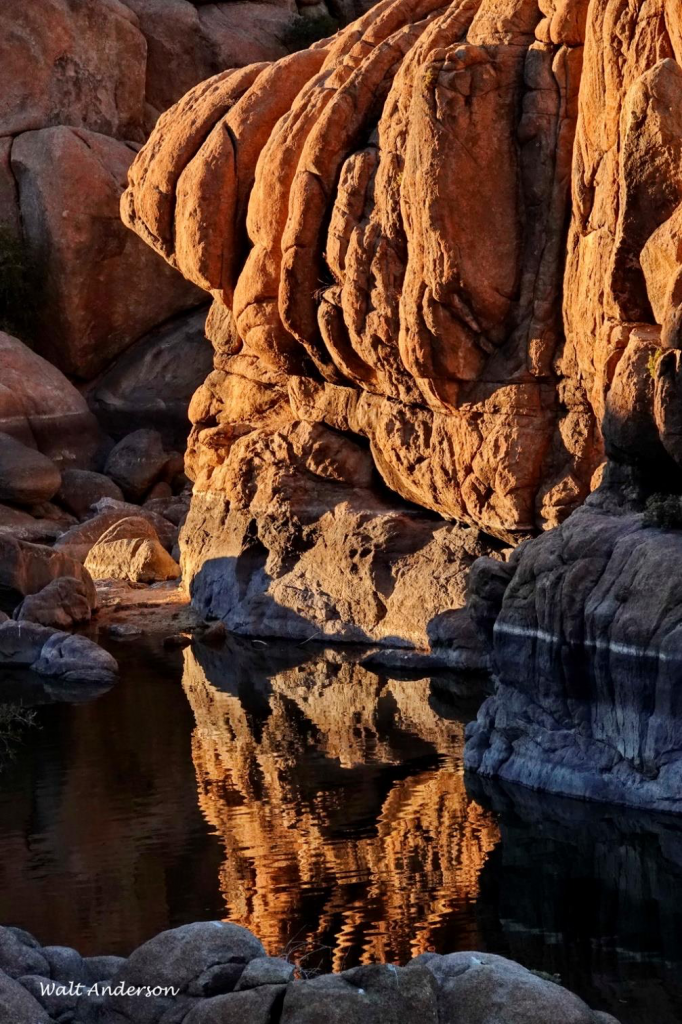
Late-day sun lends a warm richness to this scene in a cove of Watson Lake as seen from the Peavine Trail.

There are more shadows than highlights here, but those highlights give depth to a scene of weathered rocks and incredibly tough trees.
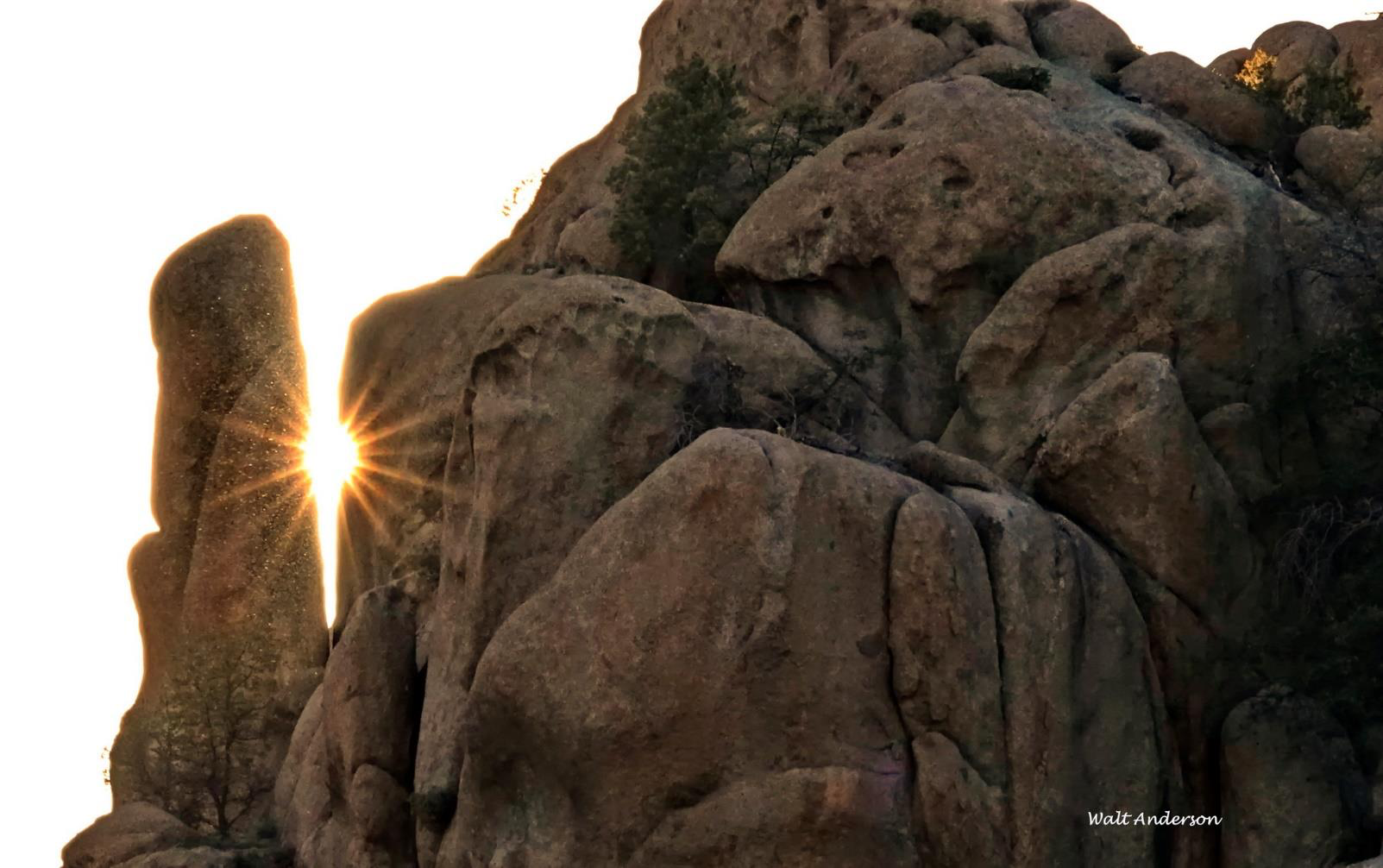
I am not afraid to shoot into the sun if its power is restricted by foreground elements that create interesting starbursts (the sun is a star, after all). What surprised me was all the aerial flotsam that the starburst makes visible.
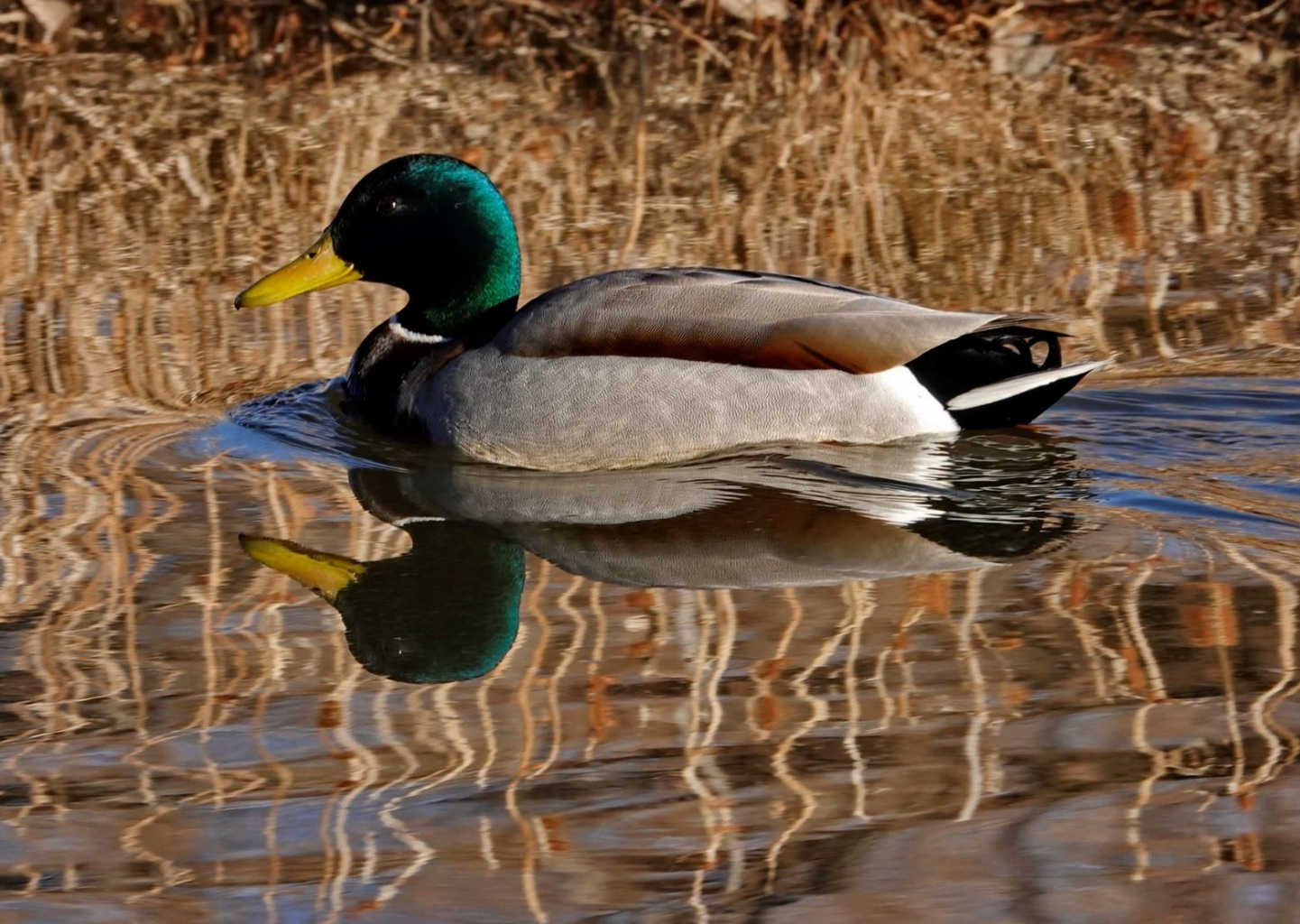
Late afternoon at Watson Lake created a very appealing portrait of a Mallard drake swimming away from the sun. The light emphasizes the green curve at the back of his head and is just right to catch that reflected highlight in his eye. I panned with the bird, who was swimming fast. This kept him and his reflection sharp while blurring the reflections of cocklebur into pleasing abstraction.

Here I had to shoot at a speed that stopped the drake Shoveler’s motion and didn’t blur the small sticks projecting up from the water. The bird is gorgeous, but it is the context—the reflections—that makes this special.
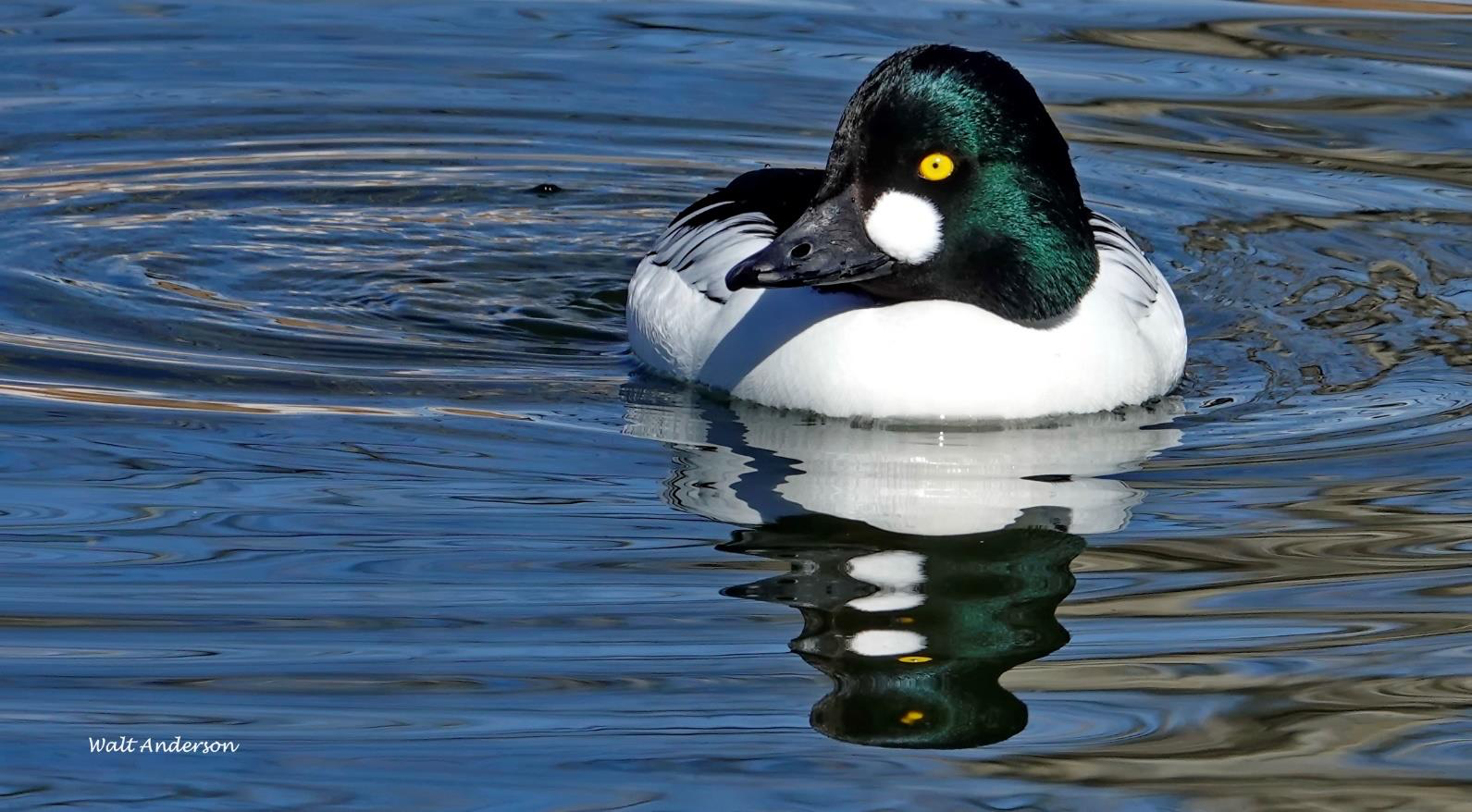
If you are out and about earlier in the day, you can take advantage of an Arizona blue sky by using it as the cool reflection. The iridescent green on the head of this handsome Common Goldeneye is emphasized by the front-quarter lighting. The head is also positioned right at a point of power, and the bird has room to move into the picture (a couple little photo “rules” that often help).
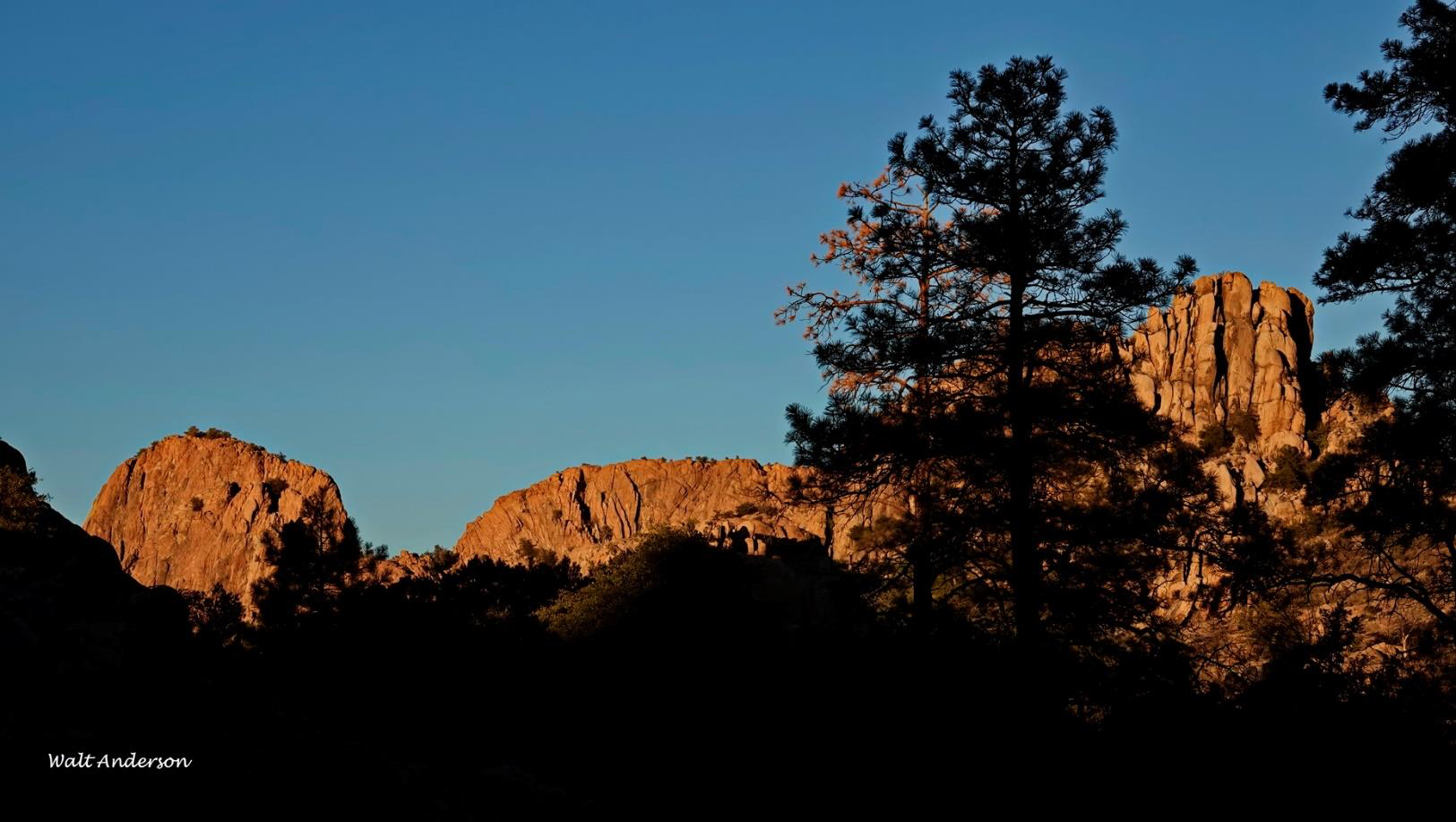
I don’t want to suggest that a clear, blue sky is always detrimental to photography. Here it provides welcome simplicity and lovely contrast with the warm colors of late-day light on the summits. The deep foreground shadows tell you that the sun is almost down, its rays lingering a bit longer on the higher terrain. This view from the Peavine Trail is just waiting out there for you to pay attention and catch it!
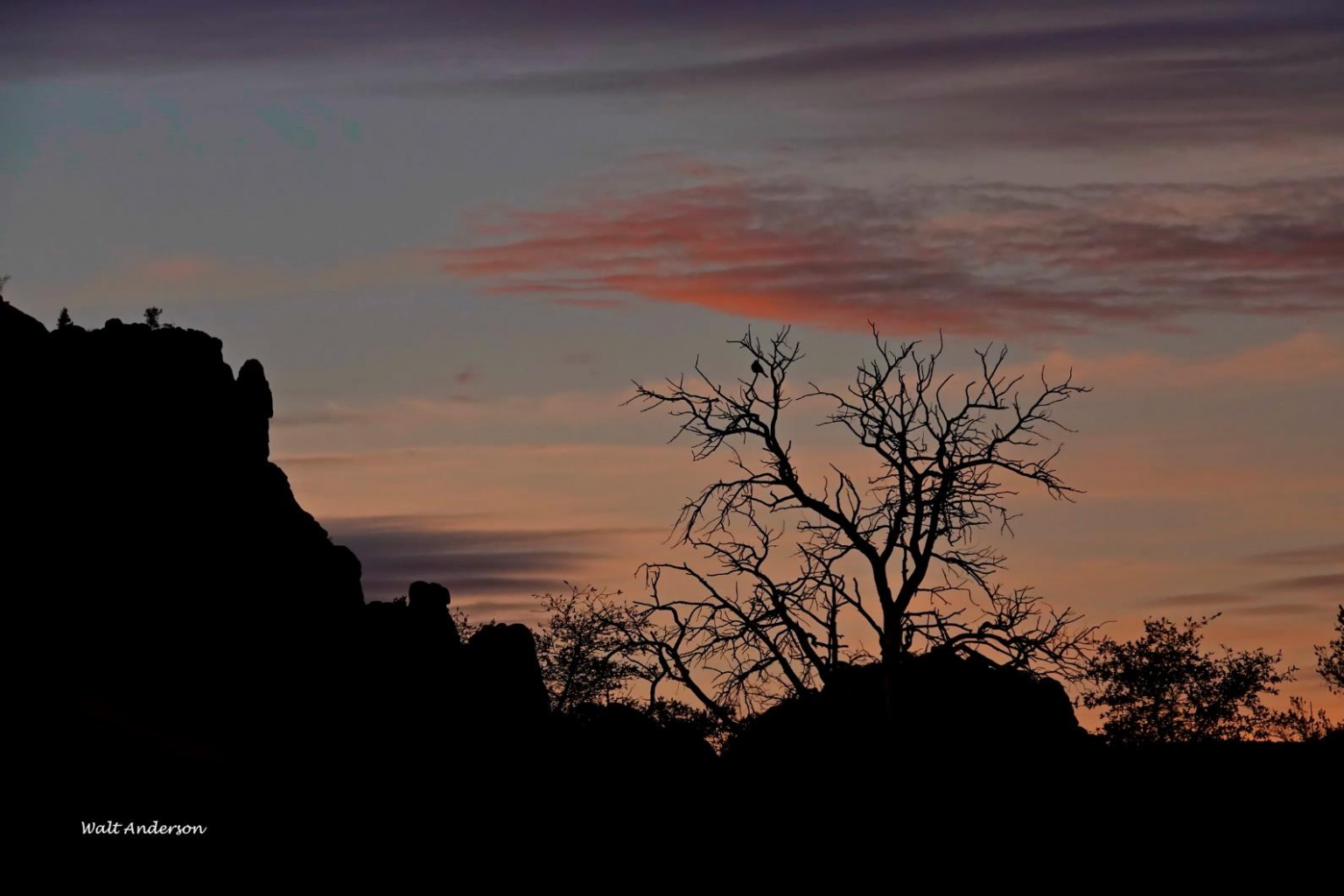
Finally, sunset can provide striking silhouettes against a colorful sky. Here, it’s all about balance. The dove in the pinyon snag adds a nice touch.
As the human population and its inevitable pressures continue to grow, we need to be proactive to counter the forces of destruction that will make this place physically and spiritually uninhabitable. Every community needs to have the collective wisdom and political will to do the right thing for those who follow, including the millions of other species that share this lucky planet with us. Mars is getting a lot of attention right now, but its lush heyday is gone.
We are not too late to save the best of our local environment—the Granite Dells. Let’s join forces and do it!
